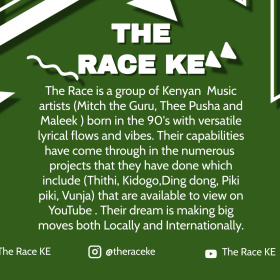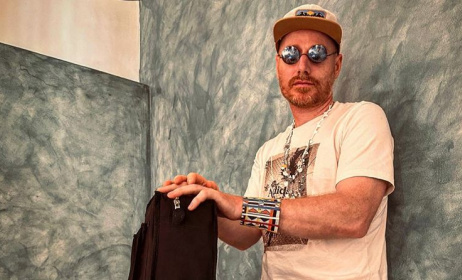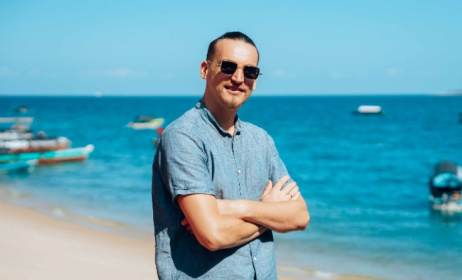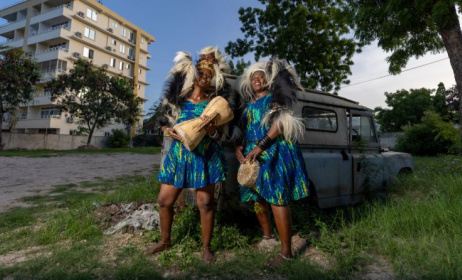How Tanzania’s Haba na Haba dance fest is supporting cultural resilience
Indigenous and contemporary dancers are stepping back into their regalia – some for the first time since the COVID-19 pandemic began – to take part in a celebration of culture, community and resilience at this year's Haba na Haba International Dance Festival, which will be held at the National Museum and House of Culture in Dar es Salaam, Tanzania, from 30 to 31 July.
 Haba na Haba festival director Isack Abeneko.
Haba na Haba festival director Isack Abeneko.
Now in its fifth edition, this event offers a performance and training platform for participants to learn more about the sector’s challenges, share ideas and expand networking opportunities with festival organisers, cultural institutions and funders.
With many performers unable to travel, this year’s programme will focus on choreographers and dancers based in the country. A mission of this year’s festival is to provide dancers, whose seasons have been cancelled, an opportunity to perform onstage. Confirmed local artists include Elimisha Dance Group, Kozoa and Mzome, Queens Dance Group, Waka Waka Dance Group, Frank & Zephania, Rafiki Centre, Girls Power, T-Africa, Bwagamoyo Africulture and Shivanjali from India.
Apart from performances, the organisers have also programmed contemporary dance and dance theory workshops at Nafasi Art Space between 26 and 29 July. The sessions will be conducted by dance teachers of international reputation Aloyce Makonde and Bandukine.
The festival is the brainchild of cultural entrepreneur, contemporary dancer and musician Isack Abeneko. For most of his career, Abeneko, who is the festival’s artistic director, has worked with professional artists and young talent alike. In the following interview, he explains the genesis and vision of Haba na Haba festival.
LUCY ILADO: How are you coping with the pandemic?
ISACK ABENEKO: The industry of art and entertainment has suffered huge damage on a global level. There’s definitely a lot of fatigue in the industry; everyone has rebooked their tours several times since the start of the pandemic. However, creation and learning are inseparable so I spent most of my free time learning new production skills online. I also spent time with my family.
Why did you start this event?
We wanted to offer training and a performance platform for local dancers and choreographers – particularly groups who promote and preserve the art of traditional and contemporary dance in Tanzania. At the same time, we wanted to invite international guest artists and groups to come and share their passion, knowledge and experience in the cultural industry.
Festival production is a stressful endeavour and considerations around the pandemic must certainly add an increased level of anxiety...
The general stress of doing events for the past five years has prepared us for the ultimate stress of a pandemic. Getting to where we’ve gotten thus far has been because of our confidence in our ability to problem-solve and tackle whatever comes our way. So yeah, it’s absolutely draining, but if anything, I believe it’s all just been training for greater challenges.
What has been the significance of Haba na Haba as a platform?
Indigenous identity and cultural well-being are lived practices, and it’s essential for indigenous people to continuously practice and share their songs and dances in order to maintain them, for the well-being of our communities. There is no doubt that we have inspired modern performing artists to preserve and promote traditional dance and challenged them to explore how traditional dance relates to contemporary art forms. We have also offered professional training on dance, management and choreography to practitioners.
What was the selection process like for this edition?
We received 140 applications. The most challenging part was to fill in the 16 slots available. We normally have participants from different countries and continents, but due to the ongoing travel restrictions, selected artists from the UK, US, Germany and Brazil opted to cancel due to the ongoing travel restrictions.
I know that dancers love working with live music. How do you categorise the importance of live music for dance performance?
Live music elevates the quality of performance. The relationship between music and dance becomes a magical conversation. We prioritise traditional and contemporary music because there is always something less predictable in the performance when there is live accompaniment, making each dance piece unique.
What are the benefits of being both an artist and administrator?
It is a continuous conscious effort to make time and mental space for both sides. To sit on both sides of the mirror and see how to optimise both sides, especially working on a festival where I can serve the community and participate as an artist, is a benefit that is satisfying. For me, the community of artists and choreographers as well as the community that is the local public and the art appreciators come first.
What are some of the obstacles faced by cultural practitioners in Tanzania?
There were many hard times and challenges. One of them is this pandemic period. Many other organisations that practice group activities, dance and movement, acting or any other kind of closed-space rehearsals are facing financial hardship due to the COVID-19 crisis, which makes organising such an event now quite challenging.
What is the importance of education in the arts, specifically dance?
We live in a culture where individuals want everything quickly and sometimes without understanding the work and study required. I enjoy sharing the connections of social dance to traditional dance so that people understand the original source and challenge the assumption that contemporary dance has no connection to traditional dance.
Is the festival inclusive of artists with physical disabilities?
Yes. We offer special training as well as networking and performance opportunities for these groups of artists. For example, this year we are developing a special performance for male and female individuals with different psychological and physical capabilities and disabilities. This production will premiere at the event and later be showcased as part of the Accessible Arts and Culture festival in Finland between 25 and 28 August. We have also been working with the youth, especially young women by equipping them with entrepreneurship skills to improve their income and resource management.
What is the legacy of this festival?
We represent youth and culture. It is important to keep practising, participating and celebrating our culture and traditions. The festival reminds the community to be concerned about our traditions and support modern African art forms by the young generation, especially dances, music and cultural objects.





























Comments
Log in or register to post comments